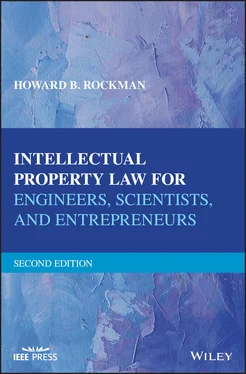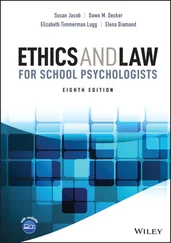The AIA made a change to Section 103 as follows:
“A patent for a claimed invention may not be obtained, notwithstanding that the claimed invention is not identically disclosed as set forth in Section 102, if the differences between the claimed invention and the prior art are such that the claimed invention as a whole would have been obvious before the effective filing date of the claimed invention to a person having ordinary skill in the art to which the claimed invention pertains. Patentability shall not be negated by the manner in which the invention was made.”
The key change made by the AIA was in making the non‐obviousness test applicable at the time the patent application for the claimed invention was filed, and not as of the invention date as in pre‐AIA §103. This conforms the definition of prior art in Section 103 with the definition of prior art in Section 102. The only other material change in the obviousness section relates to situations where (1) the prior art under consideration (“subject matter developed by another” in the statute) was commonly owned with the claimed invention, or (2) if the subject matter sought to be patented was subject to an obligation of assignment to the same person on the filing date of the application under examination. In either situation, patentability will not be precluded. In other words, the common ownership, obligation to assign, or a joint research agreement must exist on or before the effective patent application filing date of the claimed invention. Under the previous law before the AIA, these conditions had to be in existence before the date the invention was made. If any one of these conditions are met, a disclosure is not prior art at all, and cannot be used to reject a patent claim for lack of novelty or obviousness.
The legislative history of the 1952 Patent Act indicates that there was no provision in prior patent acts that corresponds to rejecting patents on the grounds of obviousness. However, U.S. courts had been holding patents invalid on the grounds of lack of invention since at least as early as 1850. The statement about non‐obviousness was purposely left broad in the statute, with no definition of “obvious” offered by Congress. Congress hoped that the courts would later develop a more explicit statement of criteria that may be worked out to determine whether inventions are obvious or not in view of the prior art. Also, the legislative history indicates that the second sentence, relating to how the invention is made, states that patentability is not to be negated by the manner in which the invention is made. That is, it is immaterial whether or not the invention resulted from long toil and experimentation, or from a “flash of genius.” This specific provision overruled a series of prior Supreme Court and other court cases, which held that, to meet the requirement of inventiveness, or non‐obviousness, the invention had to be the result of a flash of genius, rather than something resulting from long efforts and constant empirical experimentation, as is the case with most modern innovation. For example, it took Thomas Edison and his team of 20 or so engineers 2 years of steady work and experimentation to develop the first practical incandescent lightbulb.
6.3 SUPREME COURT CASES PREDATING THE 1952 PATENT LAW SECTION 103 NON‐OBVIOUSNESS TEST
There were five Supreme Court decisions handed down between 1850 and 1950 that form the background to the introduction of the non‐obviousness test for patentability into the U.S. patent system. My purpose is to give you a brief discussion of each of these cases, and to advise you of the types of criteria that were used by the courts to determine whether or not an invention rises to the level of patentability, or is merely an obvious manifestation of the prior art. By understanding the thought processes expounded by these Supreme Court justices, you should be in a good position to think about the non‐obviousness of your invention.
6.3.1 Hotchkiss v. Greenwood, Supreme Court, 1850
In this case, the U.S. Patent Office had issued a patent on a mode of fastening a rod or shank to a knob, such as a doorknob. In this case, the knob was made of clay; however, the method of fastening the shank to the knob had been known and used by others in the prior art, and had been applied by others previously for the fastening of shanks to metallic knobs, but not to clay knobs. Apparently, clay knobs had been known and used before, and the shank and spindle by which the shank was attached to the knob were known before. However, this known means of attachment had never before been used to attach a shank to a knob made of potter’s clay. It was shown that, prior to this invention, metallic knobs had been attached to shanks by means of a cavity in the form of a dovetail and infusion of melted metal, which is the same mode claimed in the invention before the Court considering the clay doorknob. The Supreme Court ultimately held in this case that substituting a knob of clay was simply the substitution of one known material for another, and therefore obvious.
The Supreme Court stated that the improvement, if any, consisted in the superiority of the material, clay versus metal, and this was not considered new over materials previously employed in making knobs. The difference between the patented invention and the prior art was merely formal, and destitute of ingenuity or invention. The Court also stated that the invention gave evidence of judgment and skill in the selection and adaptation of the materials used in the manufacture of the instrument for the purposes intended, but nothing more. In other words, the Court felt that a skilled technician could merely substitute clay for metal knobs, and that would constitute the subject matter of the alleged invention. The Court went on to say that, “unless more ingenuity and skill in applying the old method of fastening the shank and the knob were required in the application of it to the clay or porcelain knob than were possessed by an ordinary mechanic acquainted with the business, there was an absence of that degree of skill and ingenuity which constitutes an essential element of every invention.” In other words, the improvement here was the work of a skillful mechanic, not that of an inventor.
This was the first case in which the Supreme Court added the requirement of “invention or non‐obviousness” to the requirements for patentability. Remember that such non‐obviousness requirement was not in the patent statute of 1836, under which the case of Hotchkiss v. Greenwood was decided.
6.3.2 Atlantic Works v. Brady, Supreme Court, 1882
The patent in question in this case involved dredge boat construction, the invention consisting mainly of attaching a screw to the forward end of a propeller dredge boat, the boat being provided with tanks for settling it in the water. The dredge is operated by sinking the boat until the screw comes in contact with mud and sand, which, by the rotation of the screw, is thrown up and mingled and carried away with the current. The use of tanks for the purpose of keeping the vessel level while she settled was already old in the art, having been used in dry docks previously. It was also shown that the same tanks for leveling craft were used in many light‐draft monitors during the “late war.” I would like to quote directly from this case to show what the Supreme Court in 1882 felt was the difference between patentable invention and merely the exercise of technical skill:
“The process of development in manufactures creates a constant demand for new appliances, which the skill of ordinary head‐workmen and engineers is generally adequate to devise, and which, indeed, are the natural and proper outgrowth of such development. Each step forward prepares the way for the next, and each is usually taken by spontaneous trials and attempts in a hundred places. To grant to a single party a monopoly of every slight advance made, except where the exercise of invention, somewhat above ordinary mechanical or engineering skill, is distinctly shown, is unjust in principle and injurious in its consequence.”
Читать дальше












